Geology Reference
In-Depth Information
Fig. 4.32
(a) A non-migrated seismic
section. (b) The same seismic section after
wave equation migration. (Courtesy
Prakla-Seismos GmbH.)
Any system of migration represents an approximate
solution to the problem of mapping reflecting surfaces
into their correct spatial positions and the various meth-
ods have different performances with real data. For
example, the diffraction method performs well in the
presence of steep reflector dips but is poor in the pres-
ence of a low SNR. The best all round performance is
given by frequency-domain migration. Examples of the
migration of seismic sections are illustrated in Figs 4.32
and 4.33. Note in particular the clarification of structur-
al detail, including the removal of bow-tie effects, and
the repositioning of structural features in the migrated
sections. Clearly, when planning to test hydrocarbon
prospects in areas of structural complexity (as on the
flank of a salt dome) it is important that drilling locations
are based on interpretation of migrated rather than
non-migrated seismic sections.
4.10 3D seismic reflection surveys
The general aim of three-dimensional surveys is to
achieve a higher degree of resolution of the subsurface
geology than is achievable by two-dimensional surveys.
Three-dimensional survey methods involve collecting
field data in such a way that recorded arrivals are not re-

